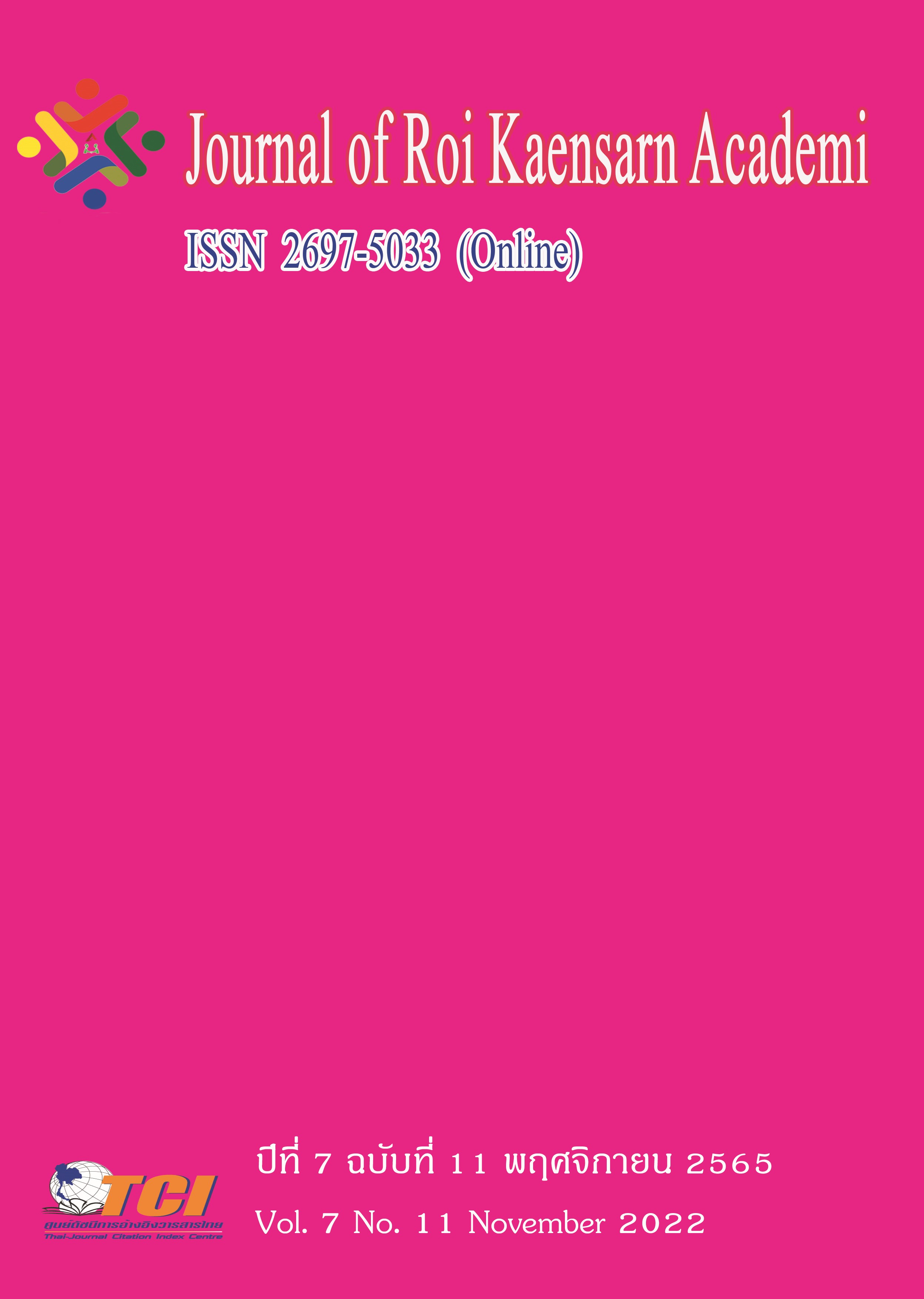รูปแบบการจัดการเรียนรู้ภาษาอังกฤษเสริมสร้างการอ่านการเขียนย่างมีวิจารณญาณ และการกำกับตนเองในการเรียนรู้ของนักเรียนชั้นมัธยมศึกษาปีที่ 3
Main Article Content
บทคัดย่อ
การวิจัยครั้งนี้มีจุดมุ่งหมายเพื่อ 1) ศึกษาสภาพปัจจุบัน ปัญหาและความต้องการรูปแบบการจัดการเรียนรู้ภาษาอังกฤษเสริมสร้างการอ่านการเขียนอย่างมีวิจารณญาณและการกำกับตนเองในการเรียนรู้ของนักเรียนชั้นมัธยมศึกษาปีที่ 3 2) พัฒนารูปแบบการจัดการเรียนรู้ และ 3) ทดลองใช้รูปแบบการจัดการเรียนรู้ กลุ่มผู้ให้ข้อมูลโดยการสัมภาษณ์ คือ ครู 14 คน ได้มาจากการเลือกแบบเจาะจง และนักเรียนคละความสามารถ 20 คน ได้มาจากการสุ่มอย่างง่าย เครื่องมือที่ใช้ในการเก็บข้อมูล จำนวน 6 ชนิด สถิติที่ใช้วิเคราะห์ข้อมูล ได้แก่ ร้อยละ ค่าเฉลี่ย ส่วนเบี่ยงเบนมาตรฐาน และการวิเคราะห์เนื้อหา
ผลการวิจัยพบว่า
1) ครูส่วนใหญ่ไม่ได้จัดกิจกรรมการเรียนตามขั้นตอนการสอนทักษะการอ่านการเขียนภาษาอังกฤษที่ถูกต้อง ขาดการจัดกิจกรรมการเรียนรู้เชิงรุก ครูยังเห็นว่านักเรียนขาดการกำกับตนเองด้วย และจากการสัมภาษณ์นักเรียน พบว่าส่วนใหญ่ขาดทักษะและวิธีในการอ่านการเขียน นักเรียนมีความรู้ด้านคำศัพท์ค่อนข้างน้อย ขาดแรงจูงใจและความกระตือรือร้นในการเรียนรู้
2) ผลการพัฒนาร่างรูปแบบการจัดการเรียนรู้ มี 6 องค์ประกอบ และขั้นตอนการจัดการเรียนรู้ 9 ขั้นตอน
3) ผลการหาคุณภาพเครื่องมือที่ใช้ พบว่า ร่างรูปแบบการจัดการเรียนรู้ โดยรวมอยู่ในระดับมาก ค่าเฉลี่ยเท่ากับ 4.46 (S.D. เท่ากับ 0.69)
Article Details
เอกสารอ้างอิง
Brock,S.E. (2010). Measuring the importance of precursor steps to transformative learning. Adult Education Quarterly, 60 (2).
Brookfield, S. (2006). The skillful teacher: On trust, technique and responsiveness in the classroom. San Francisco: Jossey-Bass.
Clark, C.R., & Mayer, E.R. (2003). E-Learning and the science of instruction. San Francisco: John Wiley and Son.
Cottrell, S. (2005). Critical Thinking Skills: Developing Effective Analysis and Argument. New York: Palgrave Macmillan.
Djiwandono, P. I. (2013). Critical Thinking Skills for Language Students. TEFLIN Journal. 24 (1), 32-47.
Duffy, T. M. & D. J. Cunningham. (1996). Constructivism: Implication for the Design and
Delivery of Instruction. pp. 170-195. in D. H. Jonassen (ed.). Handbook of Research for Educational Communications and Technology. New York: Macmillan Library Reference USA.
Flavell, J.H. (1979). The Development of Metacommunication. Paper presented at the Twenty–First International Congress of Psychology, Paris.
Fosnot, C.T. (1996). Construcivism: Theory, Perspective, and Practice. New York: Holt, Rinehart and Winston.
Joyce, B., Weil, M., & Calhoun, E. (2011). Models of teaching. (9th ed.). Boston, MA: Pearson Education Inc.
Keeves, J.P. (1997). Models and model building. In Keeves, J.P. (ed.). Educational research, methodology and measurement: An International Handbook. 2nd ed., Oxford: Pearman Press.
Lewis, M. (1993). "The lexical approach: The state of ELT and the way forward." Hove, England: Language Teaching Publications.
Malcolm Larking. (2017). Critical reading strategies in the advanced English classroom. APU Journal of Language Research, 2. 50-65.
Marzano, R., & Kendall, J. (2007). The new taxonomy of educational objectives. (2nd ed.). Thousand Oaks, CA: Corwin Press.
Mayer, B.J. (2011). “Use of Top-Level Structure in Text: Key for Reading Comprehension of Ninth Students,” Reading Research Quarterly. 16, 72-103.
Mezirow, J.D. (2000). Learning as transformation: Critical perspectives on a theory in progress. San Francisco: Jossey-Bass.
Morrison et al. (2011). Designing Effective Instruction. (6th ed.). Hoboken, NJ.: John Wiley & Sons.
Oliva, P. F. (2009). Developing the Curriculum. (7th ed.). Boston: Allyn and Bacon.
Organization for Economic Co-operation and Development: OECD. (2021). 21st-Century Readers: Developing Literacy Skills in a Digital World, PISA, OECD Publishing Paris.
Richards, J. C., & Rodgers, T. S. (2014). Approaches and methods in language teaching. (3rd ed.). Cambridge University Press.
Starkey, L. (2010). Critical Thinking Skills Success in 20 Minutes A Day. (2nd ed.). New York, Learning Express.
Zimmerman B, J. (2002). “Becoming a Self-Regulation Learner: An Overview”.Theory into Practice. 14, 65-70.

